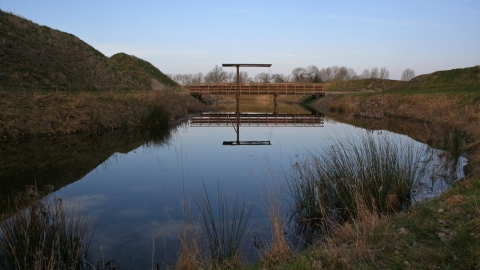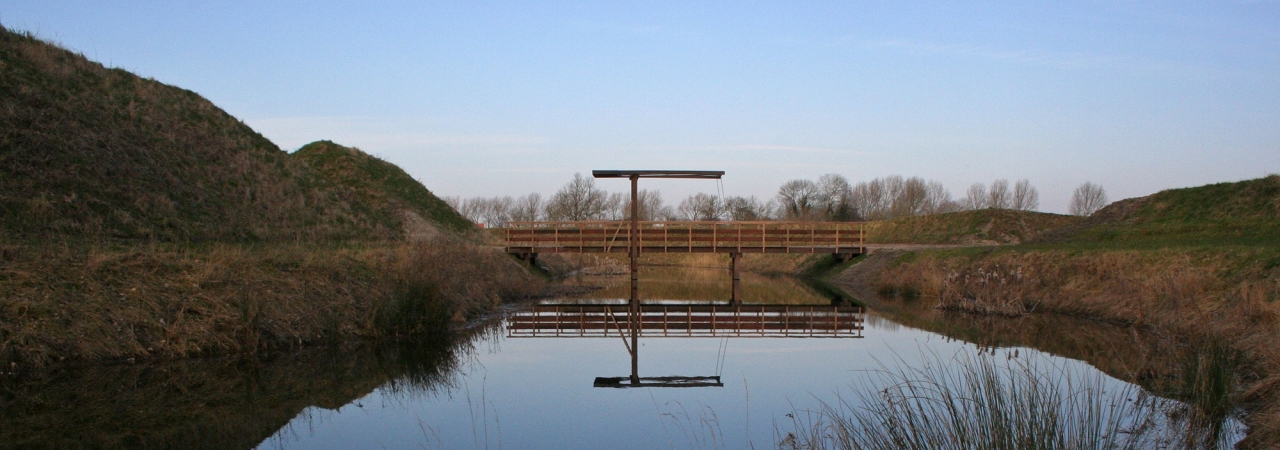The Zwin was part of the navigation route to and from the former trade metropolis of Bruges and its harbours Sluis and Damme. In around 1580, when the Zwinstreek chose the side of the Revolt, the Spaniards were anxious to do everything they could to recover this prosperous area.
In 1584, Bruges and Damme were taken by the Spanish general Alexander Farnese (from 1586 Duke of Parma). Three years later, he besieged Sluis. In order to disrupt the supply of stocks to the town from Zeeland, he closed the Zwin north of Sluis with a shipping bridge, which was protected on both sides by forts.
After the fall of Sluis, the bridgehead on the right-hand bank was rebuilt and renamed Fort Terhofstede, after the neighbouring hamlet. The fort was constantly affected by tidal movements. During a storm surge in 1597, it was nearly swept away. The only two remaining, easterly bastions were then reduced to connected redoutes (small, simple fortifications) and incorporated in the sea dyke.
In 1604, the States troops under Prince Maurits captured a large part of what is now West-Zeeuws-Vlaanderen and the right-hand bank of the Zwin definitively came into States hands.
On a map dating from 1627, level with what had been Fort Terhofstede, a guardhouse is shown just behind the sea dyke. Guardhouses were square buildings with one or more floors, which at the time were situated in various places to guard the waterways. Often they were surrounded by a moat and/or earthen embankment.
In around 1643, Berchem redoubt was constructed on the site of the guardhouse: a square fort with earthen embankments, surrounded by a moat and with a guardhouse and lodgings. In 1666, during a plague epidemic, the fort was designed as accommodation for sick soldiers from the garrison of the stronghold Retranchement. Towards the end of the 17th century, Fort Berchem was abandoned and demolished.
Fort Berchem was reconstructed in 2010 based on archaeological studies which revealed two moats. One surrounded a site of around 67 m by 62 m and the other was inside, measuring 54 m by min. 54 m. The latter canal had probably surrounded the guardhouse from the earlier phase. On the south-eastern side of the oldest canal, remains of a facing or light bridge construction were discovered. In the centre of the inner site, remains of a round brick well were found, which had probably been present at the time of the guardhouse.
The reconstructed fort is open to the public.



